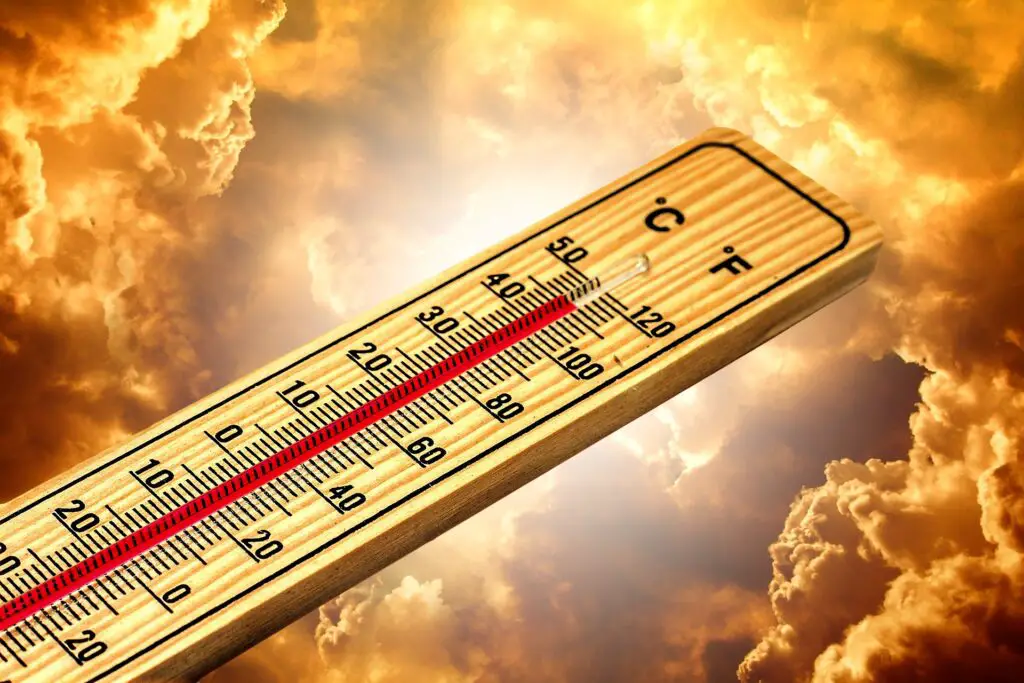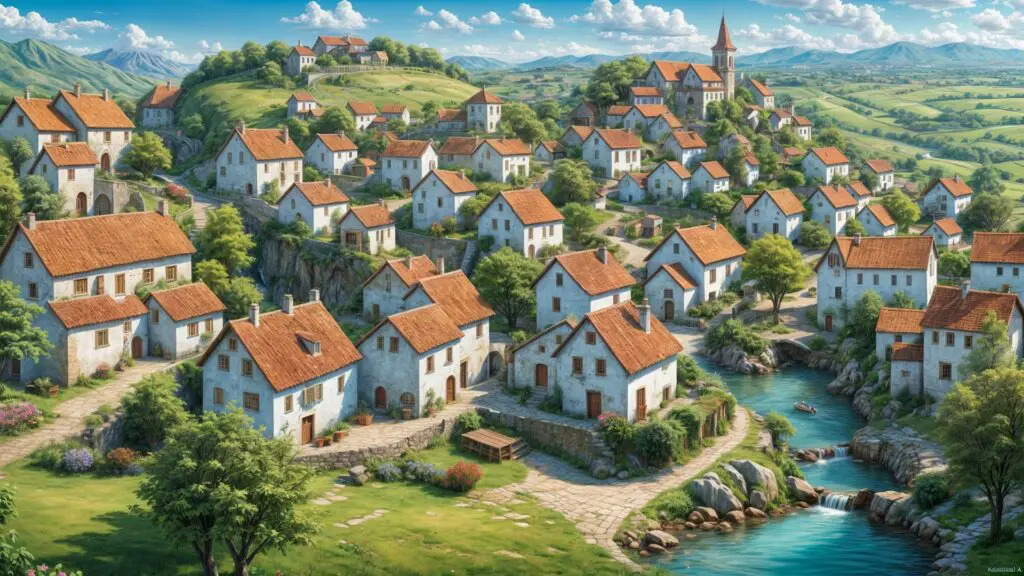What Is Climate – “The Future Of Green Earth “

What Is Climate?
1 A)Introduction climate
Seen Why It’s Hot And Warm In One Part Of The World While It’s Cold And Snow In Another? The wAnswer Is Depends On The Concept Of Climate. We Talk About Weather Which Is Depend On Short Team Parameter And We Talk About Climate Which Is Depend On Long Term Parameter. Now The Question Is “What Is Parameter”
Parameter of climate:
A) Temperature
B) Humidity
C) Rain
D) Latitude And Longitude
Let’s Break Down What Climate Really Means And How It Different From The Day-To-Day Weather We Feel. We Explore The Key Components That Make Up Climate, How It’s Measured, And Why It’s Importance To Understand This Concept. Whether You’re Curious About How Climates Vary Around The Globe Or Why Certain Weather Patterns , This Guide Will Help Clarify These Important Concepts And Deepen Your Understanding Of The World Around You.
| CLIMATE | Long Time Process (30 Year ) |
| WEATHER | Short Time Process |
2.B) Definition Of Climate
Climate It Is Referring To The Long-Term Patterns Weather In A Particular Area. When Weather Is Describes The Short-Term Conditions. In Weather We Feel Daily—Like Today’s Temperature Or Tomorrow’s Rain In Climate Gives Us A Meta Picture Of What To Expect Over Long Periods Typically 30 Years Or More.
In Simple Language Climate Is The Average Of Weather Conditions, Including Temperature, Humidity, Precipitation, And Wind Patterns, Measured Over A Long Time Like 30 Year. A Tropical Climate = Warm Temperatures And High Humidity & A Polar Climate = Cold Temperatures And Low Precipitation.
C)Components Of Climate
To Understand Climate, It’s Important To Understanding Below Each Components:
- Temperature

Temperature Is AImportant Aspect Of Climate, Indicate How Hot Or Cold An Area Typically Is Over A Long Period (30 Year).
Example- Tropical Climates = High Average Temperatures & Polar Climates = Lower Averages Temperatures
- Precipitation

Precipitation Includes All Forms Of Water Like Rain, Snow, Sleet, And Hail. The Amount And Type Of Precipitation A Region Receives Are Key Factors In Defining Its Climate. Some Areas Experience Heavy Rainfall = Lush Forests, While Others May Receive Very Little= Arid Deserts.
- Humidity
Humidity Refers To The Amount Of Moisture In The Air. High Humidity Levels Are Typical In Tropical Climates, Making The Air Feel Warmer. Dry Climates Have Low Humidity, Which Can Make Temperatures Feel More Extreme.
- Wind Patterns
Wind Patterns Play A Significant Role In Climate By Distributing Heat And Moisture Around The Planet.
Example: Trade Winds In Tropical Regions Help Regulate Temperatures And Precipitation Patterns. In Other Areas, Prevailing Winds Can Influence The Overall Climate By Bringing Moist Or Dry Air.
- Seasonal Changes
Seasonal Variations Affect Climate Significantly. In Temperate Climates, For Instance, Distinct Seasons (Spring, Summer, Fall, And Winter) Bring Different Weather Patterns Throughout The Year. Understanding These Seasonal Changes Helps In Predicting What Kind Of Weather To Expect During Different Times Of The Year.
By Studying These Elements, Climate Expert Can Gain Insights Into The Natural Climate Cycles And How They May Be Shifting Due To Factors Like Climate Change.
4.D) How Climate Is Measured
Measuring Climate Involves Collection AndAnalyzing Data Over Long Periods To Understand The Average Weather Patterns Of A Area.
- Weather Stations
Weather Stations Are Spread Across The Global And Are Equipped With Various Instruments To Collect Data. These Stations Measure Temperature, Humidity, Precipitation, Wind Speed, And Other Atmospheric Conditions. By Recording This Data Consistently Over Many Years, Scientists Can Determine The Average Climate Of A Region.
- Satellites

Satellites Orbiting Earth Provide A Broader View Of Climate Data. They Monitor Cloud Cover, Sea Surface Temperatures, And Other Large-Scale Weather Patterns. Satellites Help Track Climate Changes Across The Planet. Example :INSAT 3D, Advance Weather Satellite
- Climate Models
Climate Models Use Mathematical Formulas To Simulate How Different Factors, Like Greenhouse Gases And Volcanic Eruptions, Affect The Climate. These Models Help Predict Future Climate Conditions Based On Current Data And Various Data.
- Historical Records
Historical Weather Records ByComparing These Historical Records With Current Data, Scientists Can Identify Long-Term Climate Trends And Changes.
- Proxy Data
Proxy Data Comes From Natural Sources Like Tree Rings, Ice Cores, And Sediment Layers. These Proxies Provide Indirect Evidence Of Past Climate Conditions. For Instance, The Width Of Tree Rings Can Indicate Past Temperature And Moisture Levels, Helping Scientists Understand Historical Climate Patterns.
- Climate Averages
To Get A Clear Picture Of A Region’s Climate, Scientists Calculate Averages From The Collected Data. They Often Use A 30-Year Period To Smooth Out Short-Term Fluctuations And Provide A Reliable Long-Term View Of Climate Patterns. These Averages Include Metrics Like Average Temperature And Total Precipitation.
By Combining Data From These Various Sources, Scientists Can Create A Comprehensive Understanding Of Climate Patterns And Changes. This Information Is Crucial For Studying Climate Trends, Preparing For Future Climate Scenarios, And Making Informed Decisions About Environmental Policies.
E) Types Of Climate Zones
The Earth’s Climate Varies Significantly From One Region To Another, Resulting In Different Climate Zones. These Zones Are Classified Based On Temperature, Precipitation, And Other Atmospheric Conditions. The Main Types Of Climate Zones:
- Tropical Climate
Characteristics: Warm Temperatures Year-Round With High Humidity And Substantial Rainfall.
Examples: Amazon Rainforest (South America), Central Africa.
- Arid Climate
Characteristics: Very Low Precipitation With Extreme Temperature Variations Between Day And Night.
Examples: Sahara Desert (Africa), Arabian Desert (Middle East).
- Temperate Climate
Characteristics: Moderate Temperatures With Distinct Seasons, Including Warm Summers And Cool Winters.
Examples: Mediterranean Region (Southern Europe), Parts Of The United States (California).
- Polar Climate
Characteristics: Cold Temperatures Throughout The Year With Very Little Precipitation, Mostly Falling As Snow.
Examples: Arctic Circle (North Pole), Antarctic Region (South Pole).
- Highland Climate
Characteristics: Climate Varies With Elevation, Leading To Cooler Temperatures At Higher Altitudes.
Examples: The Himalayas (Asia), The Andes (South America).
Each Climate Zone Has Unique Characteristics That Influence The Environment, Ecosystems, And Human Activities In Those Regions. Understanding These Zones Helps Us To The Diversity Of Climates Around The World And How They Shape The Natural World And Our Daily Lives.
F) Importance Of Understanding Climate
Understanding The Concept Of Climate Is Necessary For Various Reasons, Impacting Both Our Daily Lives And Broader Global Concerns. Here’s Why Understanding Climate Concept:
- Predicting Weather Patterns
Benefit: Knowing The Climate Of A Region Helps Us Anticipate Typical Weather Patterns, Which Can Be Crucial For Planning Daily Activities, Business, Agricultural Practices, And Travel.
Example: Farmers Rely On Climate Information To Decide The Best Times For Planting And Harvesting Crops To Optimize Crops And Avoid Weather-Related Losses.
- Preparing For Extreme Weather
Benefit: Understanding Long-Term Climate Trends Helps Communities Prepare For And Mitigate The Effects Of Extreme Weather Events, Such As Heatwaves, Heavy Rainfall, Or Droughts.
Example: Cities In Hurricane-Prone Areas Use Climate Data To Build Better Infrastructure And Develop Emergency Response Plans To Protect Residents.
- Protecting Ecosystems
Benefit: Different Climates Support Diverse Ecosystems And Wildlife. Understanding Climate Helps In The Conservation Of Habitats And Species That Are Adapted To Specific Climatic Conditions.
Example: Conservationists Use Climate Data To Protect Endangered Species And Manage Natural Reserves Effectively, Ensuring That Ecosystems Remain Stable And Resilient.
- Addressing Climate Change
Benefit: Climate Knowledge Is Crucial For Identifying And Understanding The Impacts Of Climate Change, Which Affects Global Temperatures, Sea Levels, And Weather Patterns.
Example: Scientists Use Climate Data To Model Future Scenarios Of Climate Change And Inform Policy Decisions Aimed At Reducing Greenhouse Gas Emissions And Adapting To Changes.
- Guiding Urban And Rural Planning

Benefit: Climate Information Aids In Designing Buildings And Infrastructure That Are Suited To Local Conditions, Enhancing Energy Efficiency And Sustainability.
Example: Architects And Urban Planners Consider Climate When Designing Homes And Cities To Ensure They Are Resilient To Local Weather Extremes And Efficient In Energy Use.
- Improved Public Health
Benefit: Understanding Climate Helps In Anticipating And Managing Health Risks Associated With Extreme Weather Conditions, Such As Heatwaves Or Cold Spells, Which Can Impact Vulnerable Populations.
Example: Health Organizations Use Climate Data To Develop Heat Action Plans And Public Health Advisories To Protect People During Extreme Temperature Events.
G) Conclusion
Understanding Climate Is More Than Just Knowing Whether It’s Likely To Rain Or Heat Tomorrow. It Involves Adapted The Long-Term Patterns And Averages Of Weather That Design Our Environment And Influence Our Daily Lives. From Predicting Weather Patterns And Preparing For Extreme Events To Protecting Ecosystems, Human Life And Addressing Climate Change.
By Updating The Components Of Climate—Such As Temperature, Precipitation, Humidity, Wind Patterns, And Seasonal Changes—We Know Insights Into How These Elements Interact To Create Different Climate Zones Around The World. This Knowledge Not Only Helps Us Understand The Natural World But Also Guides Situation Base Decisions In Agriculture, Urban Planning, Public Health, And Environmental Conservation.
As We Face The Challenges / Situation Of A Changing Climate, Staying Informed About Climate Science And Trends Becomes Increasingly Important. It Empowers Us To Make Better Choices, Adapt To New Conditions, And Work Towards A More Sustainable Green And Clean Future .
“Today If You Save Climate Tomorrow Climate Will Be Save You “

Great definitely easy to understand about climate
Simple and clear to understand concept
Pingback: What is Climate change : urgent action need 5 stepclimate
Pingback: Weather vs. Climate: A Simple Guide to Their 10 Differences